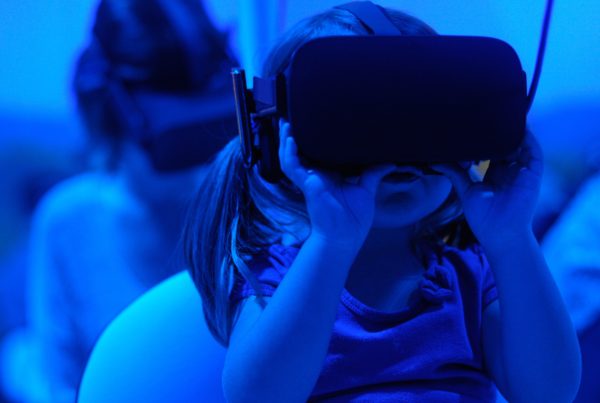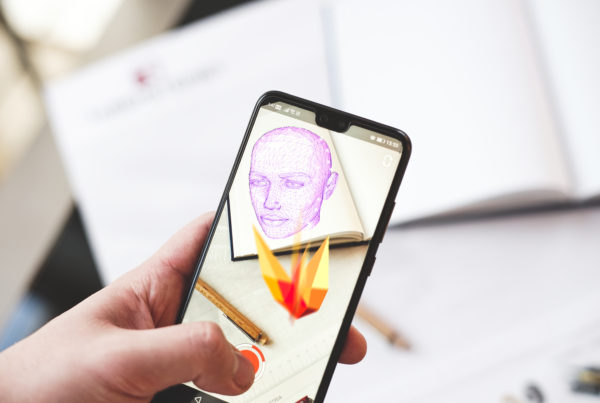In a VR world, you’re not just part of the story — you’re the one who defines it. No one’s mapped out a linear journey for you: it’s up to you where to look, where to go, and how to get there. And when it comes to pursuing a career in Virtual Reality, the story isn’t so different.
A few years ago, Filterati Randall Glass was a computer engineer with his eye on a more creative career. Today, as animator in HBO’s fast-growing Virtual Reality division, he’s integral in creating some of the entertainment world’s most revolutionary experiences — most recently Westworld VR, which immerses fans in the hit show’s Wild West theme park.
In this interview Randall gives us an inside look at what he’s working on at HBO, and explains how a combination of initiative, curiosity and passion have brought him to this point in his story.
Q: Tell us a bit about what you’re working on at HBO, and why the company is branching into VR.
I was part of the team that created Westworld VR, an HTC Vive experience that immerses the user in the Wild West theme park where the show takes place. It’s an original story that allows fans to explore the park and behind-the-scenes locations, interact with characters, and make decisions that shape the outcome of the experience. It generated a lot of buzz after it was released last fall, and was shown at a few conventions around the world.
I believe companies like HBO are excited about virtual, augmented, and mixed reality because it takes fans’ engagement with these fictional worlds to a whole new level. VR can revolutionize storytelling because it’s so immersive: the camera is you. The director is you. You’re not just part of the story; ultimately, you’re telling it.
Q: What is your role on the team?
As an animator, my main job is to make sure the data created by the designers looks as realistic as possible. This means paying a lot of attention to subtle details like facial performance or how a character’s fingers move. These are small things that you may not consciously notice, but they’re crucial to making a virtual experience feel immersive and engaging.
 Filter Talent Solution Partner Rain Blond and Client Partner Megan Burke visit Westworld!
Filter Talent Solution Partner Rain Blond and Client Partner Megan Burke visit Westworld!
Because I work on such a small, collaborative team, I’m also able to contribute outside my main area of focus. We’re encouraged to step up and make an impact wherever we can, rather than staying in our individual buckets. Because the VR industry is so young, it’s important to be able to wear different hats. For me, that makes it a really rewarding environment to work in.
Q: What do we need to know more about to make these experiences better?
The main challenge we run into in creating VR experiences is what we call the “prediction problem.” I think we still have a ways to go before we can accurately predict where a user is going to focus their attention, when they’ll take certain actions, and how they’ll choose to interact with the setting. As a result, we can end up spending significant time and resources creating scenarios that will never actually be triggered.
We’re getting closer when it comes to anticipating user behaviors, but there’s still a lot we don’t know. The key to solving this problem will definitely be more, and better, user research.
Q: How did you end up in the VR space?
I started out in computer science, but I always loved art and animation — and after a few years in engineering, I knew I wanted to pursue more creative work. After creating a cinematic sequence using a popular videogame and posting it online, I landed a job at a small gaming studio as a cinematic and gameplay designer. After being in that role for a while I realized I wanted to dive deeper into animation, so I asked people in that space how they got there. That’s how I found out about Animation Mentor, an online school that provides personalized instruction and critiques from animation experts. I was able to learn it from the comfort of my home and without taking time off work.
After graduating I was ready to jump into the animation job market, so I put together my own demo reel and an animated short using characters from various videogames. Despite my lack of experience, it caught Microsoft’ attention, and I landed a contract animation role working on a game called Ryse. It was a relatively short contract, but I learned a lot and made great connections. Several people on my team ended up moving to HBO’s VR division, and I saw an opportunity to apply my skills in a new context. So I applied, and have been at HBO for over a year now.
Many key skills transferred from animation and gaming to VR. For example, I already understood cinematics, motion capture, and real time design. Other skills took some fast learning. I knew adapting to VR would be a challenge, but was up for it — and I ended up very much enjoying the process. To fill in the gaps, I leveraged online tools and learned from the people on my team.
Q: What’s the best way for professionals in gaming and related fields to break into VR?
Being proactive is key. Take it upon yourself not just to learn but to create something and put it out there. Most VR content is created in either the Unreal Engine or Unity. These platforms are available for free and feature lots of sample content to get you started. Both also have thriving online communities that you can collaborate with and learn from. I would also recommend checking out events like GDC or your local scene for in person get-togethers.
In addition to going to meetups and networking events, reach out to people whose work you admire. Look at the credits of games and contact the creators. This might feel awkward at first, but you have nothing to lose but a potential opportunity.
The information and resources are out there — and the bottom line is that you have to go after them yourself. Be proactive and passionate, and be ready to take some risks… and surprising doors can open for you







